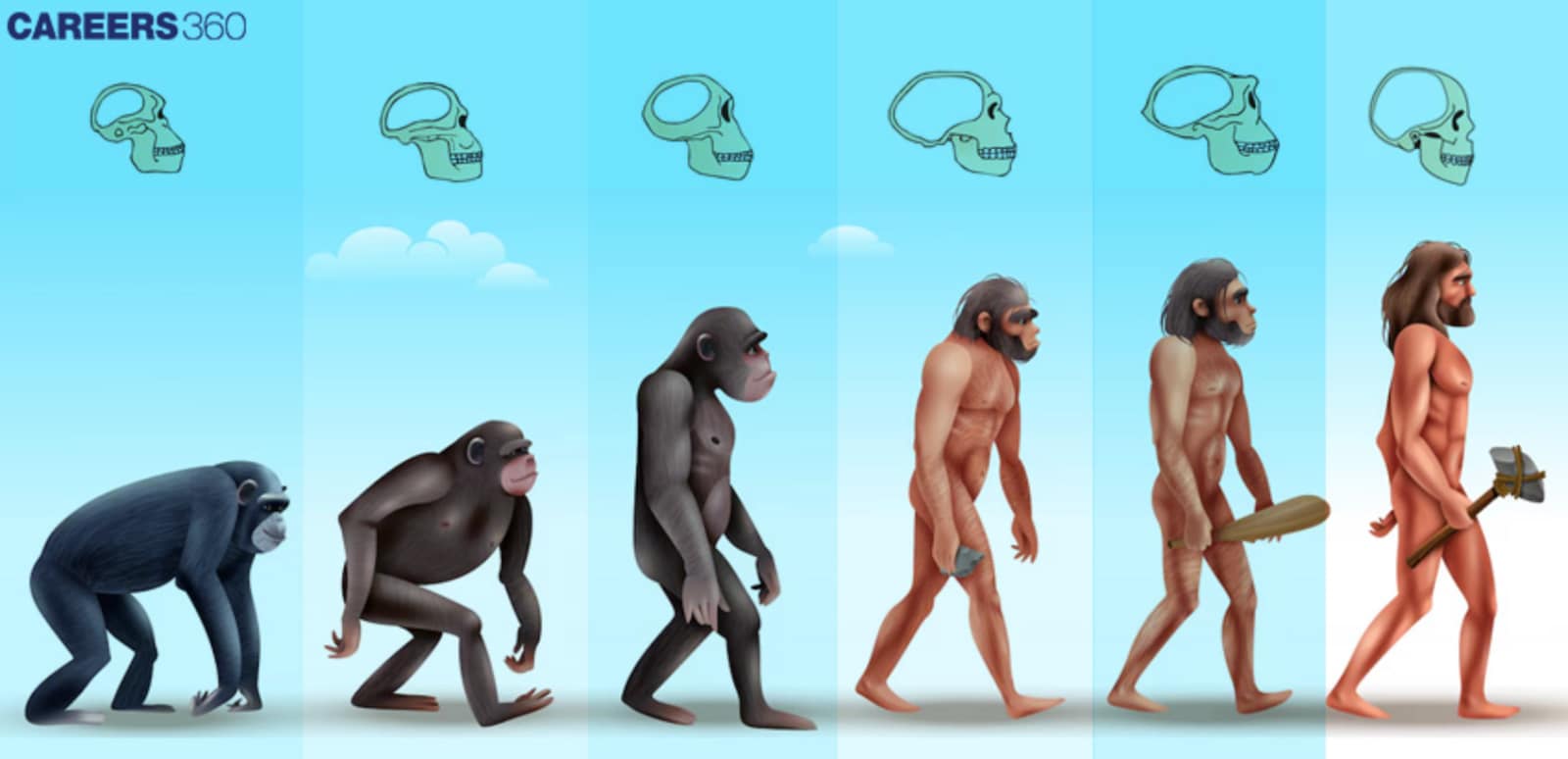Biological Evolution: Definition, Types and Examples
What Is Biological Evolution?
One walks through a thick forest of large trees, many trees with blooming flowers, and the chirping of loads of different species of birds. The real picture of millions of years of evolution is visible in every animal you come across. The beauty of the survival dance taking place in the mutual interaction of different organisms is a representation of biological evolution—the process through which species of organisms come into being and diversify from their forefathers over time. It portrays how the richness of life on Earth is explained and how species will adapt to different environments.
NEET 2025: Mock Test Series | Syllabus | High Scoring Topics | PYQs
NEET Important PYQ's Subject wise: Physics | Chemistry | Biology
New: Meet Careers360 B.Tech/NEET Experts in your City | Book your Seat now
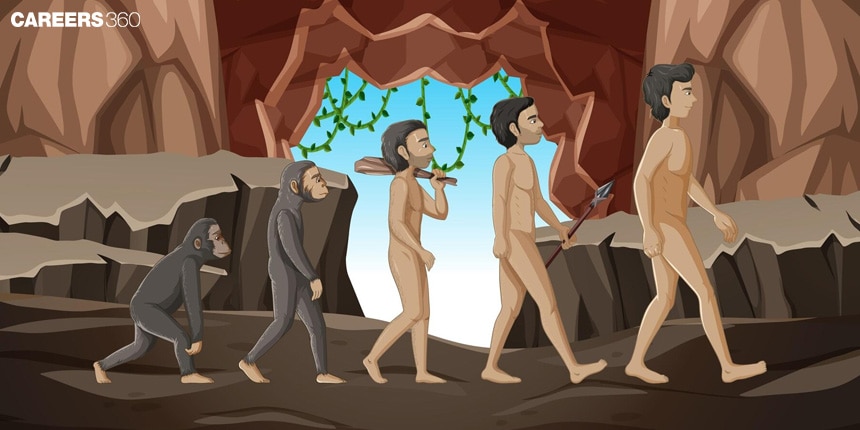
Consider the bright colours of a butterfly's wings, suitably matched to the flowers in which it lives, or the sleek shape of a fish, well-designed to move through the water with a minimum of friction. These are not events of chance but are all the products of generations at times even millions of generations of incremental changes. Biological evolution explains these adaptations as well as the evolutionary history by which they arise in many different species.
Key Concepts In Evolution
These are the key concepts:
Natural Selection
The process of natural selection involves differential survivability and reproduction by individuals bearing favourable traits. Hence, evolution by natural selection favours those traits in organisms that further survival and potential for increased reproduction. For example, one of the classical examples of natural selection at work is the evolution of colour to turn peppered moths black on soot-covered trees in industrial England.
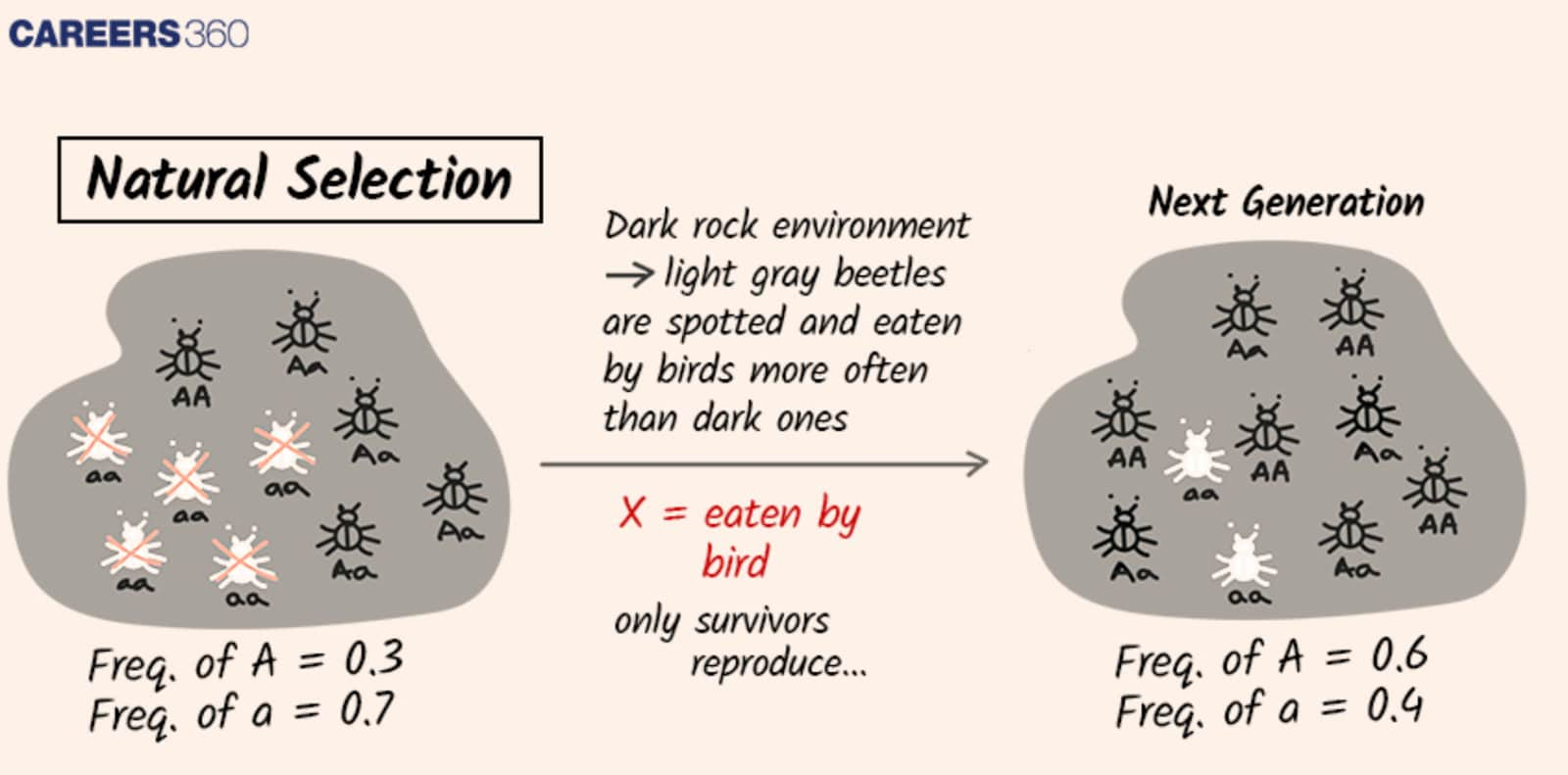
Development From Genetic Variation
Genetic variation is the raw material upon which evolution acts. It arises from mutations, recombination during sexual reproduction, and gene flow between populations. These variations supply the diversity acted upon by natural selection. Without genetic variation, a population of a species cannot adapt to changing environments, putting it at risk of extinction.
Mechanisms Of Evolution
These are the mechanisms of evolution:
Genetic Drift
Genetic drift refers to the changes in the frequency of alleles in a population occurring by chance.
In small populations, this may lead to significant evolutionary changes. Two examples of genetic drift are the bottleneck effect and the founder effect.
The bottleneck effect means that, due to an event, the population suddenly decreases and genetic diversity is lost.
The founder effect refers to when a small group of individuals starts another population that has only some of the variation of the parent population.
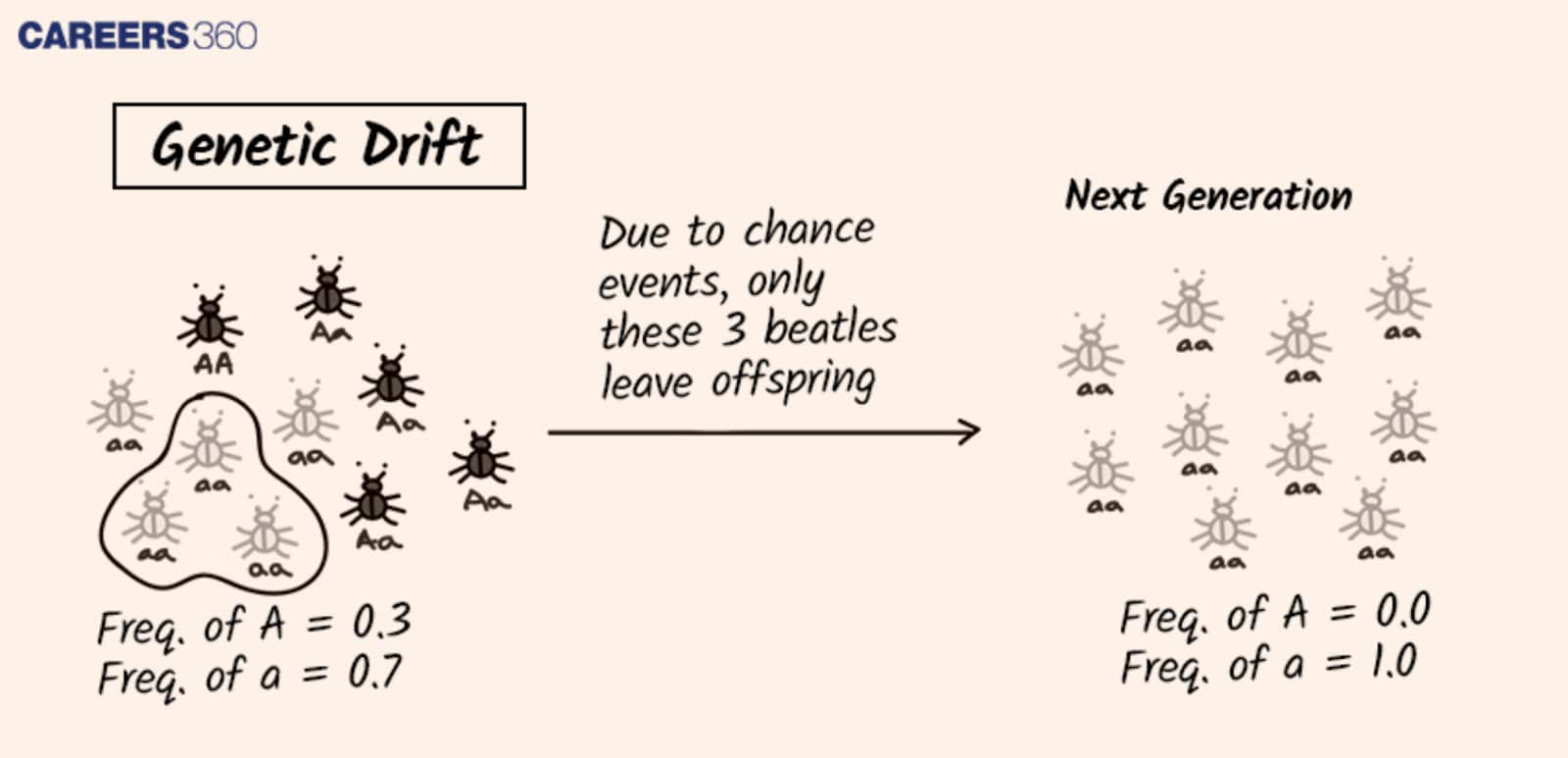
Gene Flow (Migration)
Gene flow is the exchange of genes between populations, usually increasing variation within a population.
Since it can homogenise populations, it will reduce, or prevent, speciation.
Diagrams of gene flow between populations
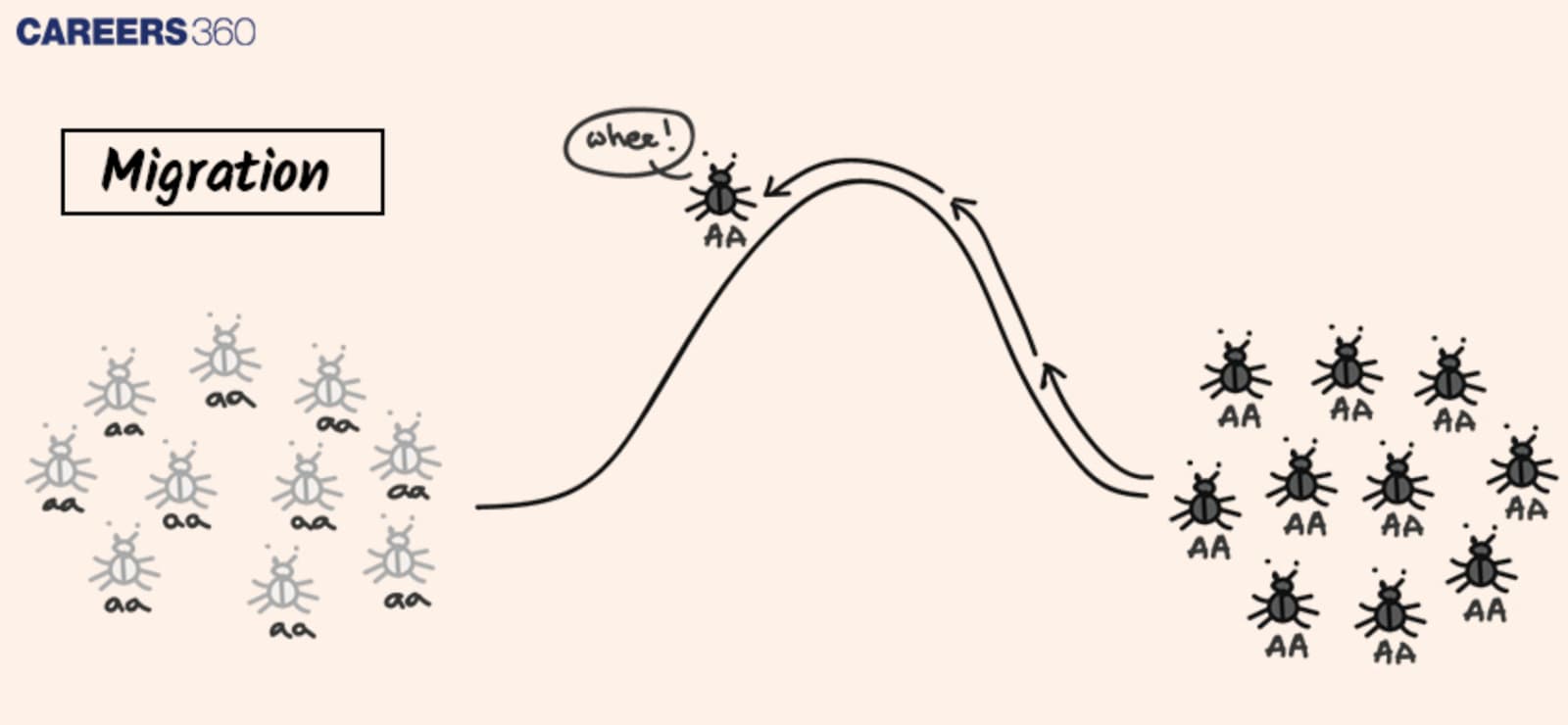 Mutation
Mutation
Mutations are changes in the sequence of DNA, introducing new variations in the genes and can be beneficial, neutral, or deleterious.
For example, a mutation in the gene CCR5 confers resistance to HIV; this point is an excellent example of a positive mutation.
Harmful mutations, such as those causing genetic disorders, show the possible negative possibilities.
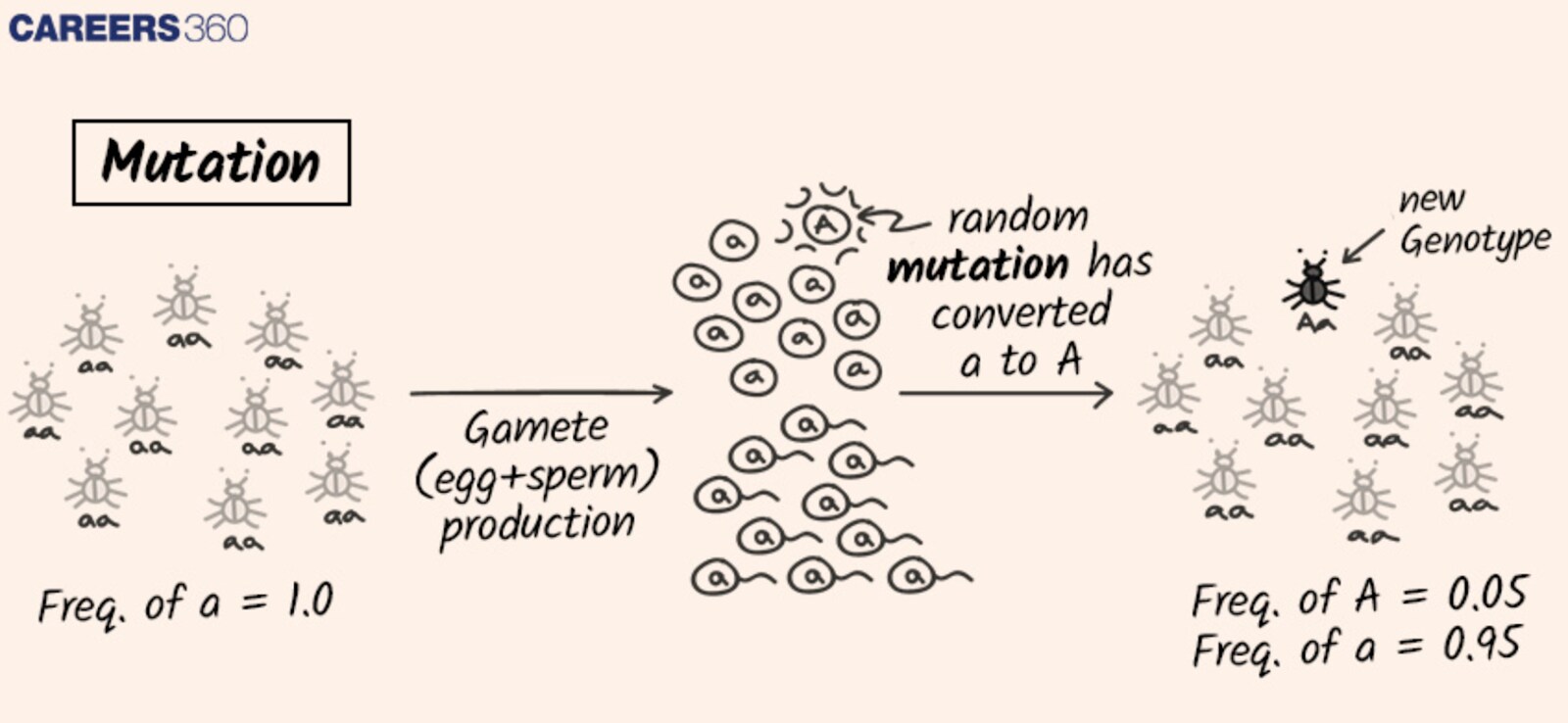
Recombination
This is the process through which genetic recombination between chromosomes happens as a result of gene shuffling during sexual reproduction, forming genetic diversity.
In so doing, this creates a different combination of alleles hence there is increased genetic variation and more adaptation possibilities.
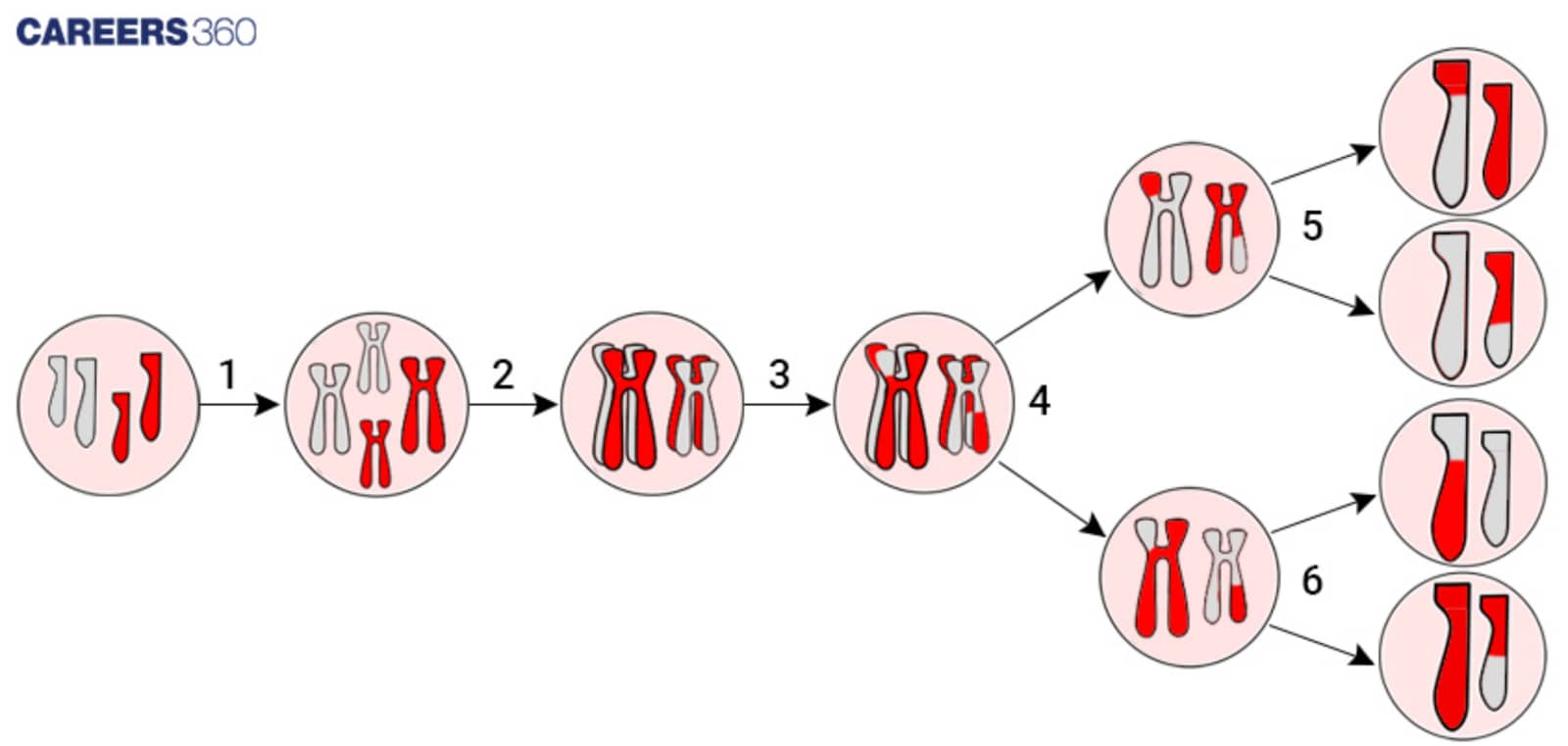
Evidence of Evolution
They are the evidence of evolution:
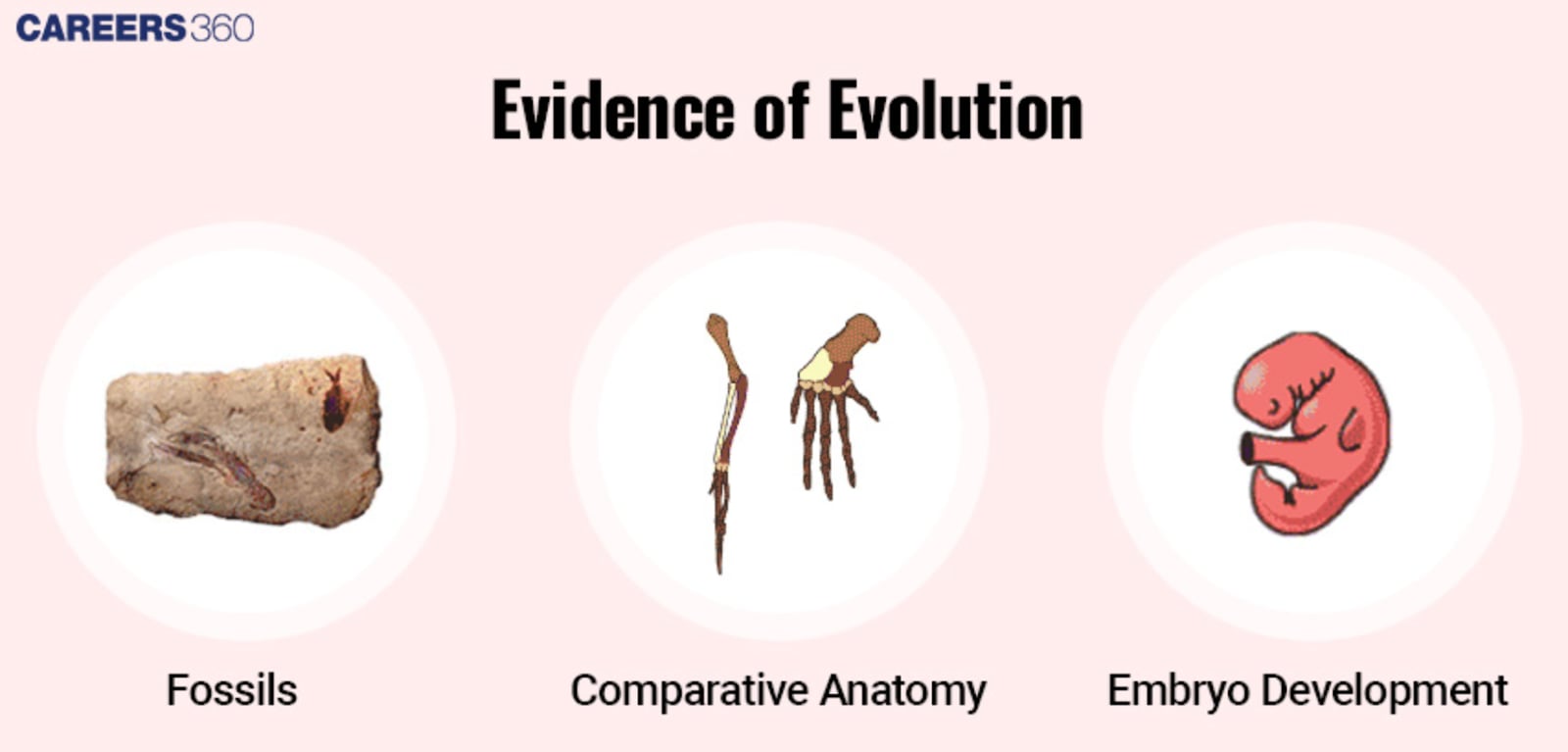
Fossil Record
The fossil record, being a record of life on Earth, exhibits species' progressive development over millions of years. When organisms are buried by sediment, their remains get conserved, thereby forming fossils. Transitional fossils, like Archaeopteryx, demonstrate the evolutionary links between groups, such as birds and reptiles.
Comparative Anatomy
Comparative anatomy studies the resemblances and distinctions of different organisms concerning structure. Homologous structures, such as the limbs of mammals, give evidence of common ancestry. Analogous structures, such as the wings of bats and insects, indicate convergent evolution. Vestigial structures, as in man's appendix, still show signs of evolutionary history.
Molecular Biology
Molecular biology provides useful genetic evidence for evolution. Similarities and differences in DNA and protein sequences of different species show evolutionary relationships. Phylogenetic trees and the methods established for estimating the timing of evolutionary events, such as molecular clocks, are useful in tracing lineages. Biogeography shows
Biogeography
The study of the distribution of species across the globe—provides evidence for evolution through patterns of species distribution. For instance, adaptive radiation occurs when a single species evolves into several different species that occupy different ecological niches.
Patterns Of Evolution
These are the patterns of evolution:
Divergent Evolution
Divergent evolution is when related species obtain different traits—for instance, because of different environments or ecological niches. Diagrams showing this divergence for species, like the Galapagos finches, are a small example.
Convergent Evolution
Convergent evolution occurs whenever unrelated species develop similar features as a result of similar environmental pressure. Such an example includes the wings of bats and birds. Diagrams on convergent evolution would show how, from an initial divergence, two species could evolve similar adaptations.
Coevolution
When two or more species influence each other's evolution, the process undertaken is known as coevolution. This is brought about by the interaction between the species, such as predator-prey or pollinator-plant relationships. An example is that of bees and flowers; in such cases, the plants and the bees would have developed characteristics or traits favouring their interaction.
Speciation
The different types of speciation are:
Definition And Types Of Speciation
Speciation is the process through which new species come into being. There are various forms of speciation:
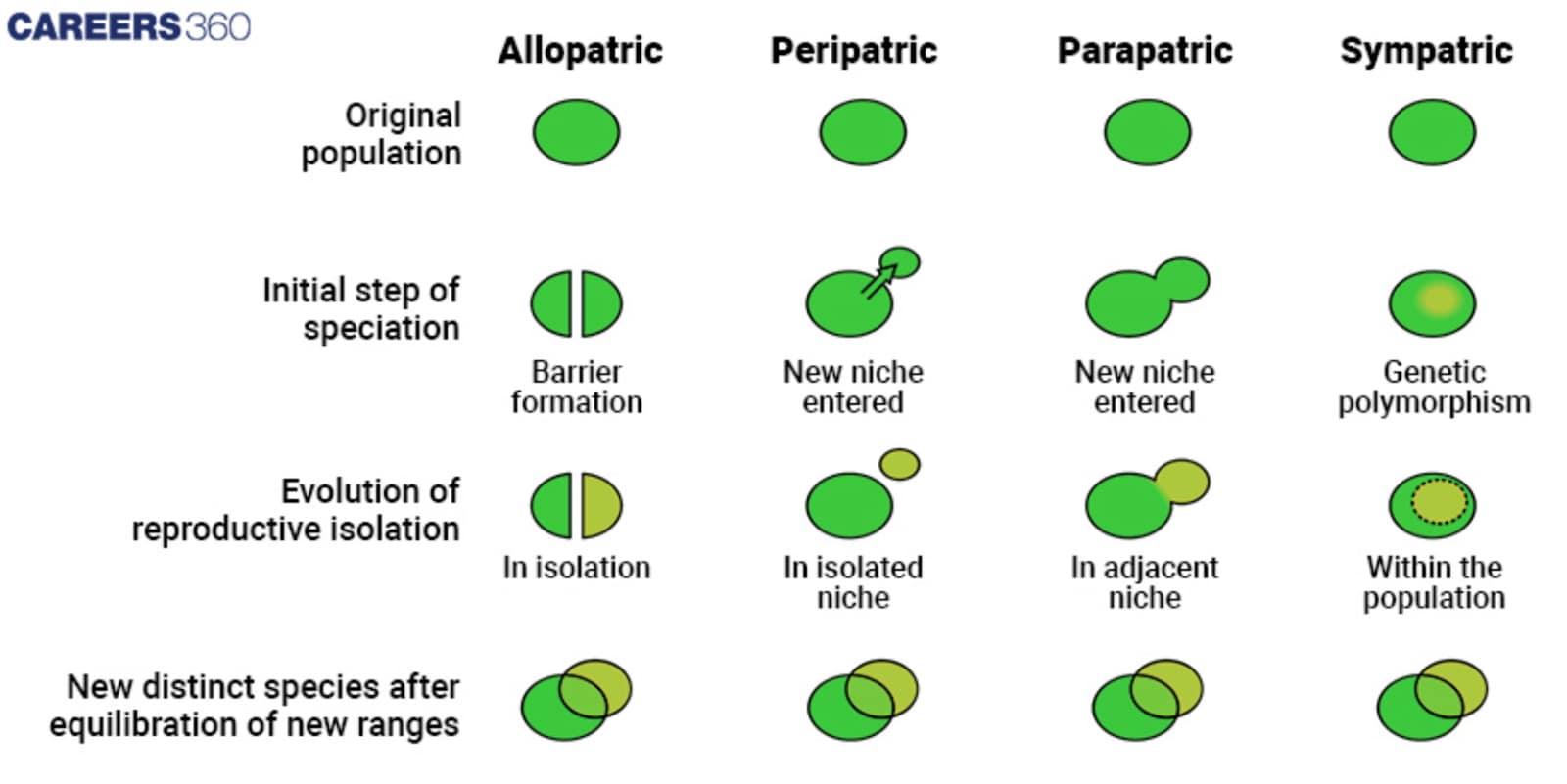
Allopatric Speciation
This occurs when populations are geographically discontinuous in distribution and normally leads to reproductive isolation.
Sympatric Speciation
It is a process happening in the same area of geography, normally by ecological or behavioural differences.
Peripatric Speciation
Speciation thereof happens; a small population is isolated at the edge of the distribution of a larger population.
Parapatric Speciation
The process through which adjacent populations evolve distinct species while in contact along a common border.
Reproductive Isolation
Reproductive isolation prevents species that are different from interbreeding. It can happen before fertilization, which is referred to as prezygotic reproductive isolation), or after fertilization, which is referred to as postzygotic reproductive isolation. Temporal isolation, where species breed at different times, and behavioural isolation, where species have different mating rituals, are examples of the prezygotic barriers to reproduction. Hybrid inviability, where hybrids fail to survive, and hybrid sterility, where hybrids are infertile, are examples of postzygotic barriers.
Human Evolution
This is the summary of the human evolution:
Timeline Of Human Evolution
The timeline of human evolution allows us to trace our genealogy from early hominids right up to modern man—a being now known as Homo sapiens.
Significantly, large hominid species such as Australopithecus, Homo habilis, and Homo erectus each had major inputs into our evolutionary history.
Genetic Evidence And Archaeological Findings
DNA analysis and other genetic evidence have verified the relationships of modern humans with our ancestors. The tools, fossils, and other such artefacts are evidence from archaeology that embody a host of inferences about early human behaviour, culture, and environment.
Evolution In Action
Evolution could be seen in action through many examples such as the following:
Antibiotic Resistance in Bacteria: In the course of treatment, medicine faces the problem that bacteria develop resistance to antibiotics by mutations and natural selection.
Industrial Melanism: Colour change was caused by the Industrial Revolution-induced pollution undergone by the peppered moth. This process has been often cited as a striking example of natural selection.
Evolution of New Species Observed: Several cases have been documented, in various organisms, regarding the process of formation of new species; this is direct evidence for speciation.
Controversies And Misconceptions
Following are some common fallacies and misconceptions:
Common Fallacies About Evolution
There are many myths still in existence about evolution, ranging from "it's just a theory" to believing it is an orderly process where simple organisms evolve into more complex ones. These can be proactively dispelled by providing scientific rationale for the layman.
Social And Ethical Considerations
It has social and ethical implications, more so when the point in question pertains to the origin of man and the genetic contribution to behaviour. Comments on such issues need to be made with great care and tact. The considerations only indicate the respect diverse perspectives deserve.
Recommended video for "Biological Evolution"
Frequently Asked Questions (FAQs)
Biological evolution is the process whereby biological populations change in the succeeding generations due to mechanics such as natural selection, genetic drift, mutations, and gene flow. This takes place while these mechanics themselves create variation in these genes and selection from genetic drift diminishes the new mutations.
The evidence comes in the form of a fossil record of gradual development; comparative anatomy that exposes structure similarities between different organisms; molecular biology that compares DNA and protein sequences; and biogeography concerned with species distribution and their evolutionary links.
Traits that enhance the fitness of an individual, that is, increase its chances of survival and reproduction in a given environment, will have natural selection prefer them. Thus as generations pass by, the population will be driven to have the favorable traits and move away from the unfavorable ones.
In this manner, it leads to adaptation. That means it makes the organisms more fit to their ecological niches and explains how species evolve to suit the environment better.
The major mechanisms of evolution include natural selection, which improves advantageous traits; genetic drift, the random changes in allele frequencies within populations; gene flow, through which the transfer of genetic material between populations occurs; and mutations, resulting in changes in DNA sequences that introduce new variations of genes. These mechanisms introduce interactions that lead to creating diversity and adaptation in forms of life over time.
The evolution of humans has been traced back through fossil evidence, genetic studies, and archaeological findings. Fossils of early hominids show physical characteristics and behaviours that our ancestors exhibited.
The DNA sequences of modern humans are compared with those of extinct hominid species by genetic analysis for the discovery of evolutionary relationships. Archaeological findings regarding tools, arts, and remains of olden times relate to the cultural and technological development of early humans.
Also Read
03 Dec'24 10:56 AM
30 Nov'24 08:28 PM
27 Nov'24 08:01 PM
26 Nov'24 11:40 PM
23 Nov'24 01:48 PM
21 Nov'24 05:41 PM
19 Nov'24 02:01 PM
19 Nov'24 11:02 AM
19 Nov'24 08:45 AM
18 Nov'24 10:54 PM

